11 Colors That Truly Go With Everything in Your Closet
It's not just classic black. Promise.
:max_bytes(150000):strip_icc():format(jpeg)/primary-d6c4123baf50499da9279e6b03aea376.jpg)
Getty Images
It's probably the phrase you hear the most when you're shopping for basics: "This goes with everything." While I can't vouch for a particular item matching everything else in your wardrobe, I can confirm that there are some basic colors that just work better as ubiquitous neutrals. These are the colors you'll want to use for your capsule wardrobe (i.e., the hero pieces in your wardrobe that you use all the time and—yes—go with everything else in your closet). Now, if you're trying out one of these colors and it doesn't happen to go with one of your more patterned or bold pieces, that's what the rest of this list is for. If black isn't working for a piece, try navy or brown instead. If you're itching for more color, try burgundy or blue. The sky's the limit!
If you want more details on the colors you can wear 24/7 with whatever else is in your wardrobe, keep scrolling.
Black
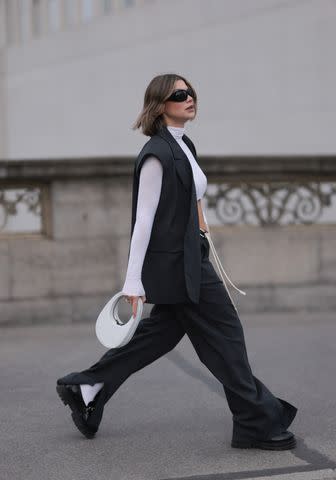
Getty
Is this one obvious? Yes! Is it true? Also yes. If you need a capsule wardrobe item like a suit (or in this case, a sleeveless vest and matching pants), it's hard to go wrong with the classic color. Black doesn't show wrinkles and stains like lighter colors do—part of the reason my closet is full of black items, to be honest—and it's easy to pair bolder, more vivid pieces against a darker background.
White
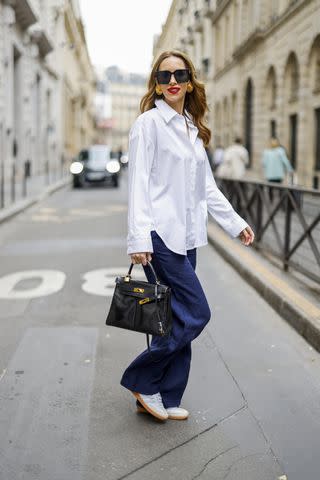
Getty
On the opposite end of the color spectrum (quite literally), white can offer the perfect blank canvas with which to build the rest of your look. If you're a fan of classic black but want to branch out, white is your intuitive next step. The crispness of a white Oxford shirt, for example, looks great with jeans, shorts, a dress, and a maxi skirt.
Camel
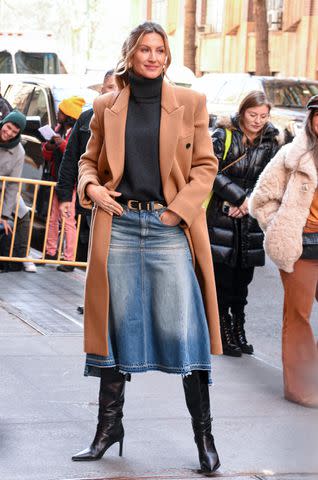
Getty
Let Gisele Bündchen show you how it's done! Camel is a surprising neutral that not everyone knows about. It's rich and deep—tan and brown mixed together perfectly—and you can pair it with other neutrals (as we see here) or brighter colors as you see fit. It's no wonder that fashion pundits labeled Bündchen as being in her "rich mom" era with this luxe coat.
Tan
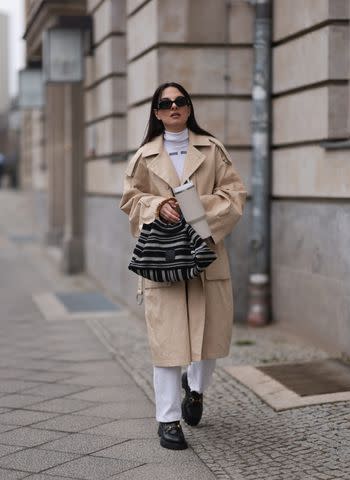
Getty
A lighter version of camel is tan, which happens to be the color of a classic trench coat. That's no accident: Tan goes well with all manner of colors, and it would work in place of white (or with white, as we see in this outfit). The spring and fall staple works perfectly in transitional weather precisely because you can throw a tan trench coat on over basically anything you might be wearing.
Olive
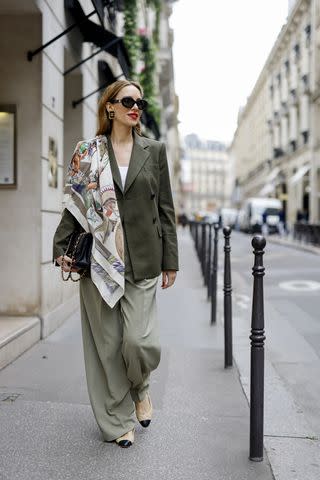
Getty
The olive green jacket was a 2010s staple—to the point where we all got tired of it—but the color is so much more than that. It's a couple shades brighter than black but can be worn just like black (as a stylish piece of outerwear, as we see here, or as a base layer). It also works beautifully when you pair it with lighter hues like white and beige.
Navy
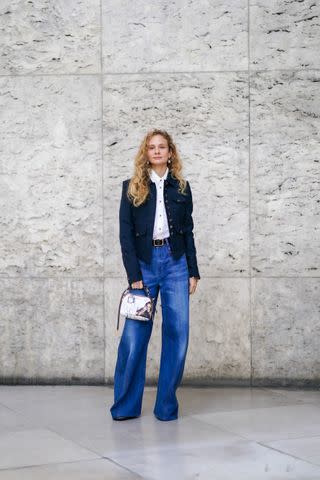
Getty
Navy is the spiritual sister to black, which means it goes with (almost) as much in your wardrobe. It goes with blue pants. It goes with white tops! It often goes with florals and patterns. It goes with denim for a tonal, all-one-color vibe. It even goes with black. Note: The rule that you can't mix navy and black (or any of your neutrals) is outdated and not true.
Powder Blue
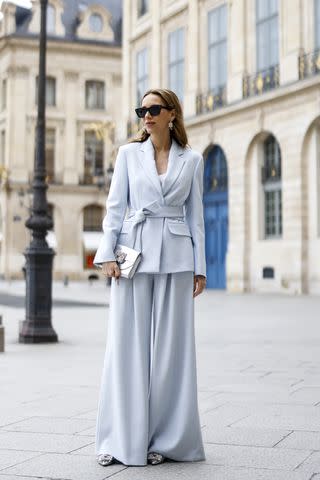
Getty
If you'd rather opt for a lighter version of the classic hue, choose a blue that's not far off from white. It's mild enough to be worn in place of white, and it's just a bit surprising if you're looking to inject some fun into your looks. You might need to experiment with the exact shade of blue that works best for you, but then you can move forward with it as a new neutral.
Denim
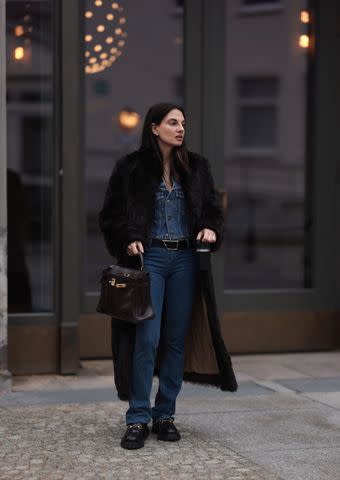
Getty
There's a reason why denim is so beloved and has stood the test of time. It serves as a "bridge" between colors, meaning it is dark enough to match with black (i.e., this jacket, shoes, belt, and bag), but light enough to contrast with it. It also matches well with lighter colors, keeping the look more grounded. Bonus: The Canadian tuxedo.
Brown
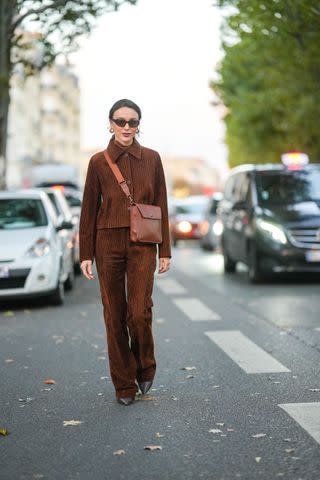
Getty
In adulthood, I've come to appreciate brown for its beautiful color. Brown is not just a muddy substitute for black: It can be rich and vibrant, as well as soft and subtle. It's probably my favorite alternative to black because it automatically brings dimension to your look. See how much cooler this tonal-brown outfit is then an all-black alternative!
Burgundy
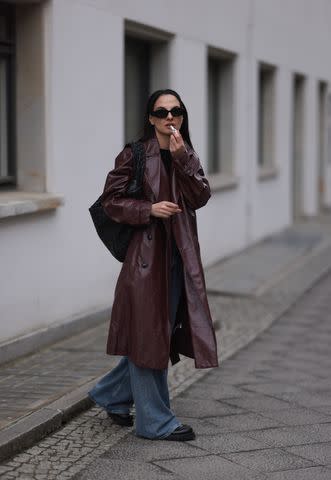
Getty
Believe it or not, burgundy is a surprisingly impressive neutral (and just about anyone can find a hue that works for them!). Like brown, olive, and navy, it's a few shades brighter than black but can be worn as if it's black. Look how much cooler this simple outfit is—black sweater, jeans, and a black bag—with this cool burgundy jacket.
Stripes
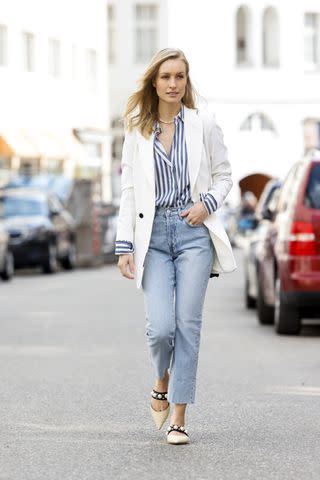
Getty
Hear me out: While it's not a color per se, stripes can act as a neutral in your wardrobe. I promise! Just make sure that the colors of the striped pattern are colors that mesh well with the rest of your wardrobe. So in this case, blue jeans and a white blazer match expertly with a blue and white striped shirt. Use it in place of a white or blue top.
For more InStyle news, make sure to sign up for our newsletter!
Read the original article on InStyle.

 Yahoo Movies
Yahoo Movies 
